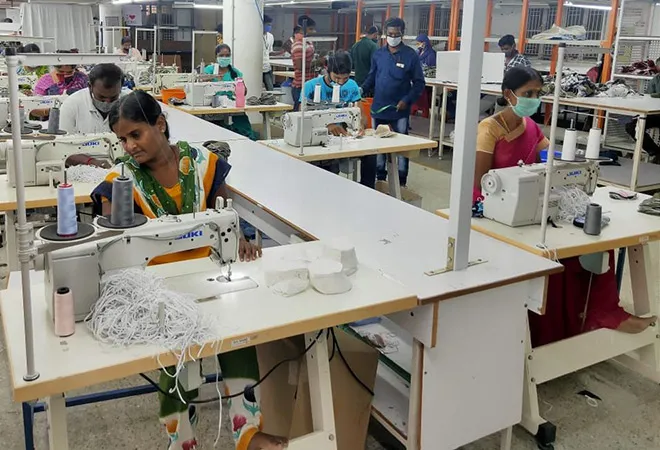A pandemic that’s devastated emerging markets — which saw more than $100 billion in outflows in March — should be spreading gloom throughout the developing world. If anything, however, there’s uneasy optimism about the future in places such as India, South Africa and Southeast Asia.
The reason? China. Until the pandemic hit, China’s stranglehold over global manufacturing and trade had seemed unbreakable. Even as wages steadily rose on the mainland, companies hesitated to shift production elsewhere. Rival nations seeking to become the base for new supply chains had to compete with formidable network externalities that had built up in China. Many of those developing countries had begun to wonder, with the advent of automation, if they would be locked out of manufacturing-driven prosperity forever.
Now, though, dependence on China looks more and more dangerous. Manufacturers haven’t yet relocated because China remains a relatively easy place to do business and there’s enough of them there to make it worth their while. Network externalities can render single-origin supply chains efficient.
But, if for some reason the network breaks down, those supply chains are quickly revealed to be dangerously fragile as well. And everyone – companies, investors and, importantly, other developing countries – picked up on that almost simultaneously sometime in March. One of the few ways that network externalities can be overcome is if some shared signal causes a coordinated move to another equilibrium. The pandemic was that signal.
Since then, developing-country policy makers have been seeking to take advantage of this moment of possibility. Vietnam’s prime minister told global investors that his country was “getting ready to receive foreign investors who want to either invest in new projects or move their production from other countries to Vietnam.” In a relatively short speech announcing India’s stimulus package, Prime Minister Narendra Modi referred to “supply chains” eight times.
Like their peers elsewhere, Indian policy makers are trying all sorts of things to lure factories out of China. They are setting up new pharmaceutical production hubs. The government says it is building up a land bank to offer interested companies. It’s getting nibbles, too — enough that some in India’s electronics industry hope to be able to double exports in just three years.
There’s even fresh hope for the sort of difficult structural reforms leaders such as Modi have postponed for too long. In South Africa, reformist Finance Minister Tito Mboweni was apparently told by President Cyril Ramaphosa that the crisis-driven downgrade of the country’s sovereign rating meant it should press ahead with such reforms. (Mboweni says that his response was, “Hallelujah.”)
Across the emerging world, the prescriptions are similar. South Africa needs to reform its restrictive labor market, which keeps formal wages too high to be competitive with China. Other African countries need to lower their barriers to trade with each other. The Philippines needs to cut its high tax rates on corporate income. All these reforms are politically difficult; without the crisis, they might never get passed.
Making the rest of the developing world more competitive would certainly pay dividends for its vast numbers of unemployed young people. But some of this focus on structural reform also misses the point. The potential for disrupting China’s manufacturing monopoly isn’t about a new cost paradigm. The pandemic hasn’t eroded China’s efficiency advantage. What’s new is the hope that companies are looking to establish more sustainable, secure and robust supply chains — even if they’re less efficient in the short run.
If that’s true, all these tough reforms, while crucial for competitiveness, will need to be complemented by the “soft” reforms that would contribute to robustness and sustainability. That means countries will need to put in place clearer, world-class regulations. They’ll need to increase transparency, predictability and openness in tax treatment. They’ll need to deepen their financial markets, harmonize their legal environments and so on.
Remember what pursuing a “China plus one” strategy really means for companies. They’re planning to diversify their supply chains anyway. To attract them, countries don’t necessarily need to be cheaper or more efficient than China.
But they do need to be more transparent and dependable. The nations that win this race will be those that can convince corporations they’re the safest place to do business, even if not always the easiest.
This commentary originally appeared in Bloomberg.
The views expressed above belong to the author(s). ORF research and analyses now available on Telegram! Click here to access our curated content — blogs, longforms and interviews.




 PREV
PREV


